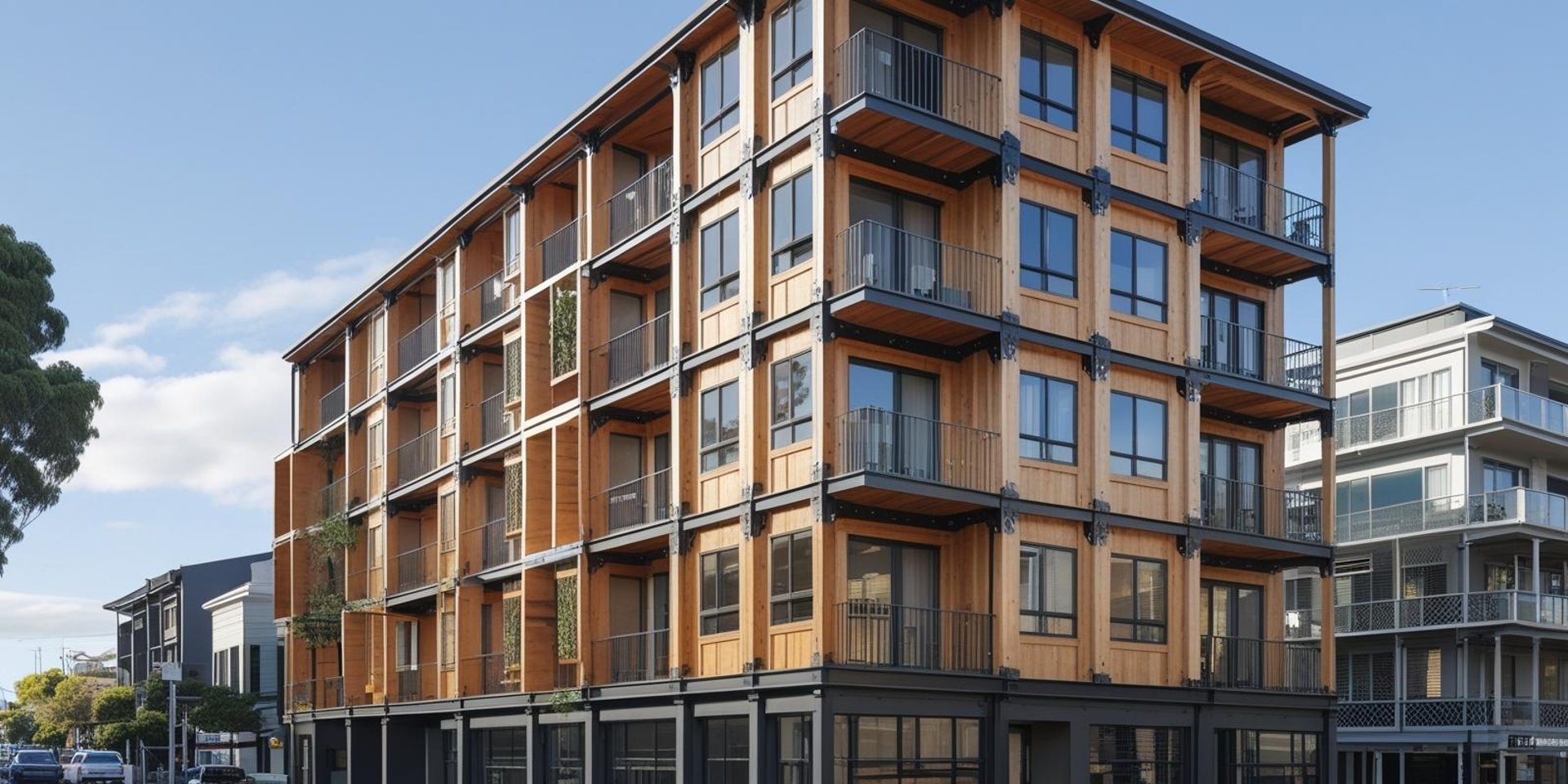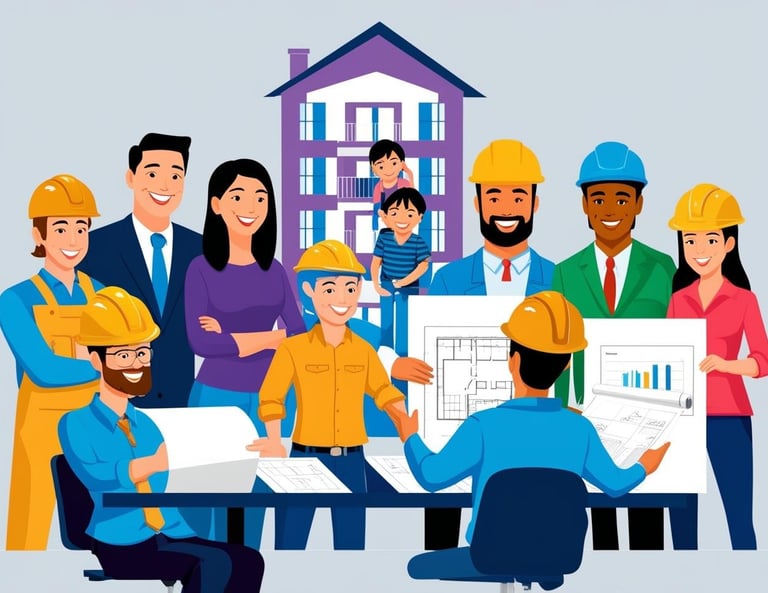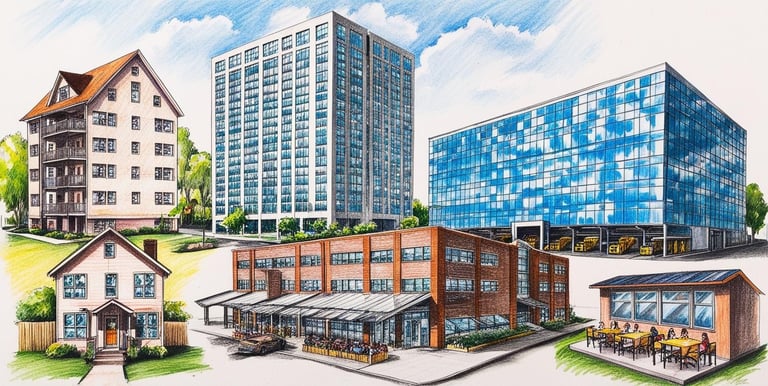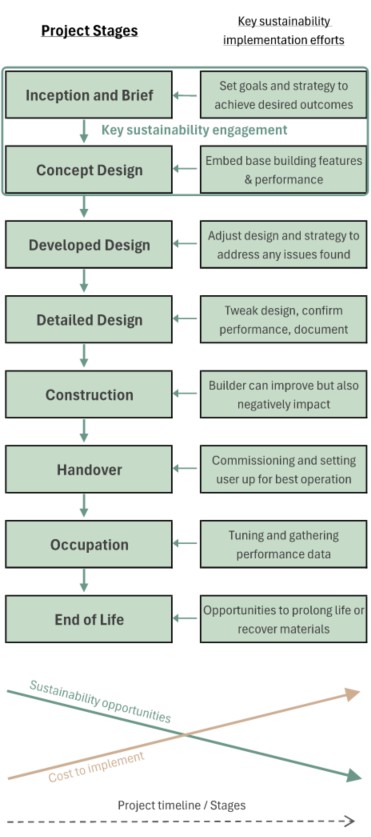Is Ecolution right for your project?

Projects and Clientele
You may be wondering whether your project can benefit from 'sustainable design' and bringing Ecolution SBS on to your team. In most cases Ecolution will be able to make valuable contributions to your design. See below for relevant client and project types.
Clients - Can be almost anyone with a building project, such as anyone looking to build a house, landlords, commercial building owners, architects, engineers, project managers, contractors, or developers.
Projects - Can be almost any type of building, such as small standalone dwellings, medium density terraced housing, large apartment blocks, recreation centres, offices, industrial sheds, retail, schools, universities, masterplans, new builds, and existing building renovations/ extensions/ fitouts.
Other - It's not only building projects that Ecolution can help you with. Any sustainability, product or related issue that you have could be suitable. For example, you may be developing a building product (e.g. insulation) or system (e.g. SIPs) and want to explore sustainability issues, opportunities, performance and certifications.


[Ecolution SBS]


Ecolution SBS, eco home designer, sustainable building consultant,
Project Stages
Traditionally, a building project will consist of a 'design phase' and a 'construction phase', with work ending at 'Handover' to the client. It's becoming evident how important continued involvement into Occupation is to maximise effectiveness and efficiency of the installed systems. Further, consideration of how a building is treated at 'End of Life' should be incorporated during design (e.g. designing for disassembly and re-use, rather than demolition and sent to landfill). Ecolution can provide services and advice for both of these typically missed stages of a building's life and overall sustainability.
The simple maxim for integrating sustainability on a building project is 'the earlier the better'. Crucially, many decisions impacting building performance (many of which are not visible or obvious in the final product) are locked in near the beginning of the project. This is why an early conversation with Ecolution about aspirations and target setting is so important, ideally during Inception, development of the Brief, or Concept Design. Concept Design is arguably the most important Stage, as this is where the majority of passive performance measures are embedded and can't be changed during later Stages (without significant cost). Quite simply, sustainability is implemented most effectively and most cost-effectively at the beginning of the process, reversing across the lifespan.
Flow chart showing building project Stages, key efforts at each stage, declining sustainability potential and increasing costs to implement [Ecolution SBS]

Value
The value of using Ecolution for you as a client is the mix of quality, flexibility, and low cost. I come from a background of high-profile, reputable consultancies, so have a mentality of producing high quality work. As a sole operator I am not restricted by large business bureaucracy, enabling a strong balance of quality and flexibility, at a lower cost to you than other larger consultants.
As outlined above, the best value will be enabled with early project engagement. This is when all options are still on the table, and you can capitalise on my knowledge of which of those options best represent your project aspirations. While earlier is better, there is almost always opportunities to add sustainability features to a project, because most projects have not incorporated any measures beyond code minimum standards. As such even minor adjustments can have a useful and potentially valuable positive impact.
I'm a combination of designer and engineer, bringing consideration of aesthetic and functionality as well as performance and analysis. This means that while I might be conducting a technical task, say daylight modelling, I will also be able to provide effective recommendations on how to improve performance in ways that are complimentary to the architecture and clients values.
Finally, I am a career long exponent of sustainable design and a very practical person. So, while I am dedicated to environmentally responsible practices, I also acknowledge the issues of cost and complexity. As such it is my (very enjoyable) mission to find the most cost-effective and practical measures for your particular project.
Consultation
Ecolution offers an initial, no obligation, free consultation. The purpose of this conversation is to understand the project, idea or issue you have, and determine what the possible and best courses of action are. It will also give you a chance to get a better idea of me as a person and professional, and whether we would work well together.
So please do get in touch so we can arrange a chat, either over the phone or a coffee if possible!
Engagement
Ecolution's role on your project could be arranged in a number of ways but will most likely be as a specialist consultant on a wider design team, or a sub-contractor to a contractor or architect. Whatever the project and work package, we'll find a suitable arrangement for everyone involved.
FAQs
Q: Where did the name Ecolution SBS (Ecolution for short) come from?
A: It is a combination of Ecology - i.e. the relationship between organisms (in this case, humans) to one another, and to their physical surroundings (in this case, buildings); and Solution - the core purpose of the business, to find solutions to your sustainable building issues and aspirations. It is also a nod to Evolution - my own aspiration to evolve sustainable building practices in NZ. 'SBS' stands for 'Sustainable Building Solutions', which again is exactly what the business provides.
Q: Why is Sustainable building design important?
A: It reduces environmental impact; it improves indoor environment quality for better comfort, health and human experience; it increases longevity of your building asset; it lowers energy, water and resource consumption, and saves you money over the life of the building.
Q: What makes a building 'sustainable'?
A: I see sustainability in the context of buildings to be a spectrum. At the gold-standard top end, a building is truly sustainable if it is 'net zero carbon' (amongst other things) over its entire life-span. However, this is a very difficult level to achieve, so reserving the term 'sustainable' only for this highest level would be too demanding and likely self-defeating. At the low end, I see code minimum buildings as a zero on the sustainability spectrum. Remember code minimum is also 'the worst a building can be without being illegally poor'. Defining the spectrum between these two points is very difficult as buildings vary so much; measures that are critical for some buildings are ineffective in other buildings. This is why green rating tools, like Green Star and Homestar, are complex and nuanced. This is also why the exercise of discussing project aspirations, preferences, targets and devising a strategy early on are critical to achieving the right level of 'sustainability' for you and your project. For more information, see the Sustainability page.
Q: Can Ecolution help me with my project?
A: Most likely, yes. Almost any building and building project can be improved from a sustainability and performance point of view. Sustainability is far broader and nuanced than most people know, so even if you don't think your project will benefit, get in contact and Ecolution will be able to demonstrate ways improvements can be achieved.
Q: How much more expensive are 'sustainable buildings'?
A: This is a complex question to answer. Generally, a 'green' building is expected to cost a few percent more than a conventional building. This is quite simply because a green building will be better quality. Just like any product - phones, cars, appliances, clothes, etc. - the better products generally cost more, for good reason. The difficulty with buildings is figuring out how to make comparisons. For example, if you design a house fully, then decide you want to make it Homestar 10, it will take a considerable amount of upgrading elements (e.g. double glazing, to triple glazing) to achieve that level of performance. Of course, replacing standard efficiency elements with high efficiency items is going to come at cost premium. This is when cost comparisons make sustainable buildings look expensive, because it wasn't designed to be a sustainable building, it was an afterthought, and therefore a rather unfair comparison. However, if that same project incorporated a Homestar 10 rating goal from early on in the design process, decisions would've been geared towards that goal throughout (e.g. reducing the amount of glazing to reduce glazing costs), which will manifest in a far lower cost uplift. So, in summary, expect a cost uplift, but know that early incorporation of sustainable design will help to minimize that cost uplift.
More questions? Don't hesitate to get in touch and ask!
Ecolution SBS
Tailored solutions for healthier, environmentally responsible buildings.
Site Navigation

